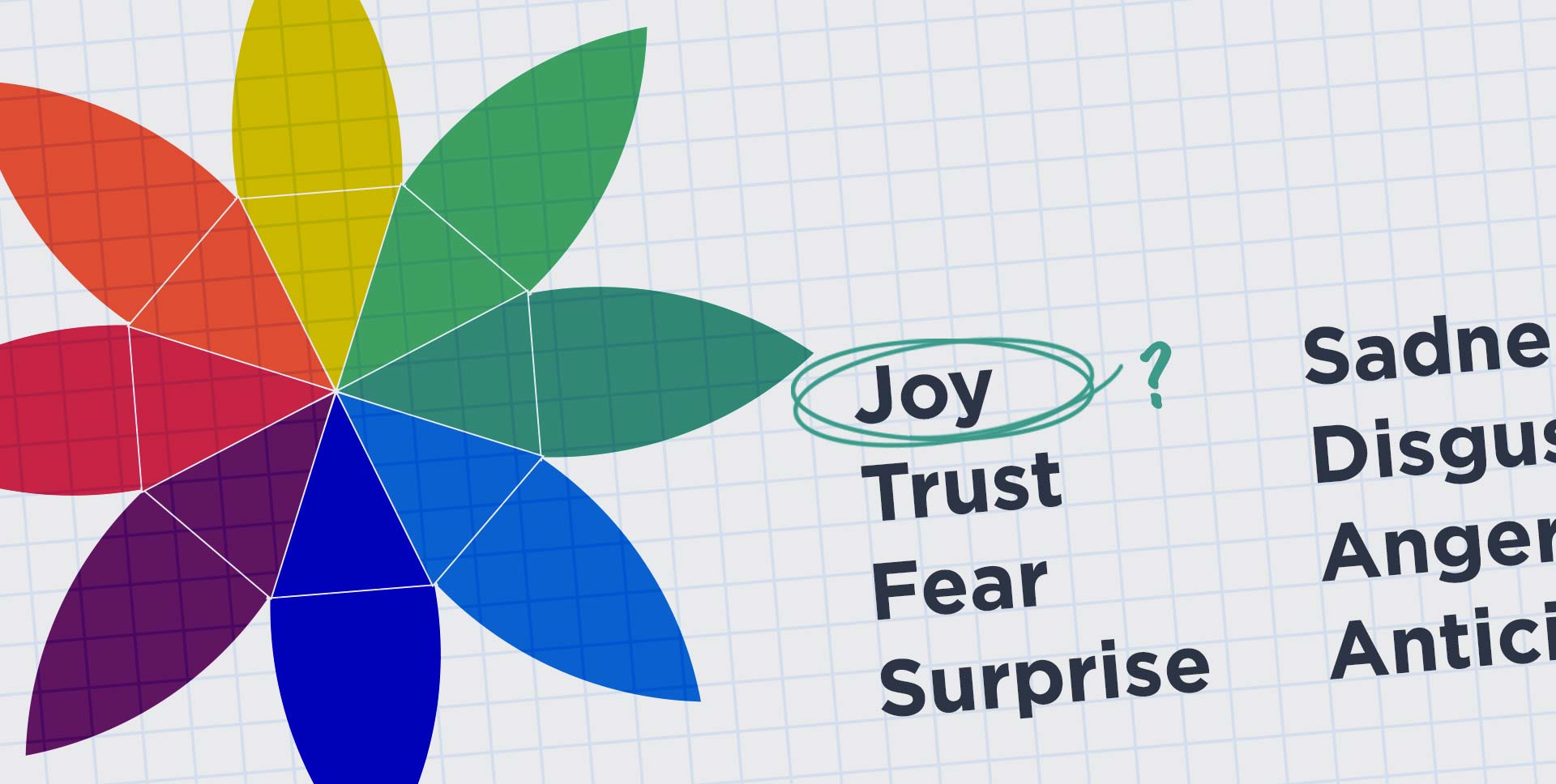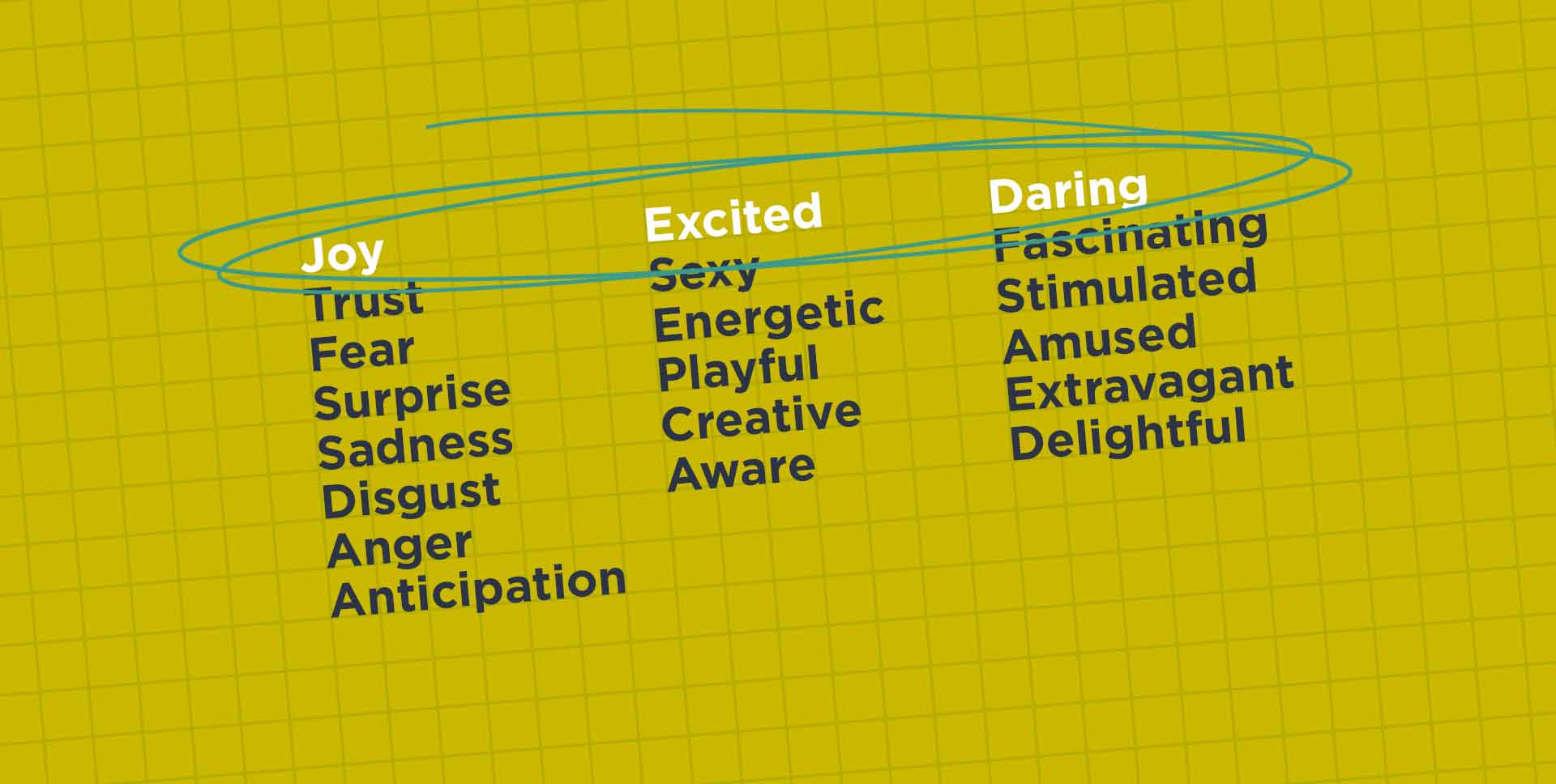
“How are you?” What a simple question with so many complex answers yet most of us answer with “Good”. Besides our culture, why do we default to a one-word expression to explain our feelings? We feel a range of emotions but to use them we must learn what they are and express them correctly.
We’ve already discussed the 6 universal emotions; joy, surprise, sadness, anger, disgust, fear, and sometimes contempt, but there are many other emotions that stem off of them.
The Wheel of Emotions
Robert Plutchik, a well-known psychologist who studied emotions, created the wheel of emotions. The wheel of emotions takes the core emotions (plus two additional emotions that Plutchik considered core emotions) and creates layers and branches of relatable emotions.
For example: 'Joy' is a core emotion, 'excited' may be a branch off of 'joy', and 'daring' a branch off of 'excited'.
Often, as Plutchik found, we use metaphors to explain the complexity of our emotions; “My heart is broken”, “I feel like I could fly”, or “They make me want to puke”. If we take the example “I feel like I could fly” which core emotion would this be? The two most common answers would seem to be joy and surprise, but without explaining more of this flight-like feeling it may be hard for others to relate.
This is where the Pultchik’s wheel of emotion comes into play as it gives us a wider vocabulary to pinpoint what it is we are feeling.
Branches off of the 6 Core Emotions
Plutchik’s wheel has been modified by students, researchers, and teachers to better explain to others what their emotions may be. Below are some examples of emotional layers within the core emotion, most coming from Plutchik’s wheel.
Joy
Serenity, ecstasy, and cheerfulness
Surprise
Amazement, stimulated, and excitement
Sadness
Grief, loneliness, and pensiveness
Anger
Rage, frustration, and annoyance
Disgust
Loathing, repulsion, and aversion
Fear
Terror, apprehension, and isolation
With this expansion on your emotional vocabulary you can better communicate your feelings to others. However, words still can be left to interpretation, which can cause miscommunication, assumptions, or confusion. Relying on verbally communicating our emotions may not be enough.
Could emotional analysis be the cure to figuring out our deepest feelings?

Many systems exist that try to categorize human emotion; some even grade their intensity and present conflicting taxonomies.
Reading Expressions through Facial Movements
From 1941-1954 Harold Scholsberg, chairman of psychology at Brown University, pursued a study of human emotions. He concluded that studying verbal emotions alone was not enough and that facial expressions and body movements together gave additional insight into defining our true emotional state. Unfortunately, Scholsberg was ahead of his time and his research received little to no publicity.
Silven Tomkin came next, with a deep passion for understating the complexity of human emotions through facial movements. He published theoretical essays, which inspired Paul Ekman the leader in emotions and facial expressions, to develop an objective way to measure facial behavior.
For 30 years Dr. Ekman has studied the face, trying to see more emotions beyond the core 6. He has expanded the studies on micro expressions and eye movements allowing him to catalog over 5,000 facial muscle movements.
Dr. Ekman now believes, with this catalog and additional research he is working on, that hidden emotions can be unlocked through emotional analysis! This would allow people to better understand themselves and it would allow companies, like Kairos, to better understand and serve our customers on a deeper level.
Too Good to Be True?
Although there is continuous research proving a large range of our emotions there is also continuous research proving the range of our emotions may be smaller than we thought.
At the Institute of Neuroscience and Psychology, at the University of Glasgow, researchers are negating the concept of 6 core emotions and concluding we only have 4. The conclusion came after they studied the facial expressions and emotional signals of people who looked at computer-generated facial animations and tried to mimic those emotions facially themselves.
The researchers found that anger and disgust and fear and surprise shared similar facial movements and only in social settings do these emotions tend to be exaggerated. So, as our social settings evolve so do our emotions, but at the start of life our emotions are very simplistic.
Continuous Learning about Human Analytics
Does this mean emotional analysis will never truly read our hidden emotions? Are our hidden emotions even true emotions? What doors will open if our hidden emotions can be read through our faces? How will it change the world?
For now those questions cannot be answered without continuous studying, learning, and development of new applications with emotional analysis. With the growing adoption of this technology we can all gather more data, analyze it, and together determine more about our deeper emotions.
By understanding our emotions we can collect human analytical data that will better help us understand our customers, our peers, and our business partners. This will tell us how people feel about our brands, products, and how to make changes to better relate to the audience. This nautrally leads into modelling human behavior in ways that can predict the affect of stimuli on people and their resultant actions.
Our own experience with building emotion analysis tools means we have done the hard work for you -- integrating this technology into your own products and services has never been as simple as it is today.
Learn more about Kairos’ human analysis tools.

Ben Virdee-Chapman
Ben is the CDO & Head of Product at Kairos, a Human Analytics platform that radically changes how companies understand people.